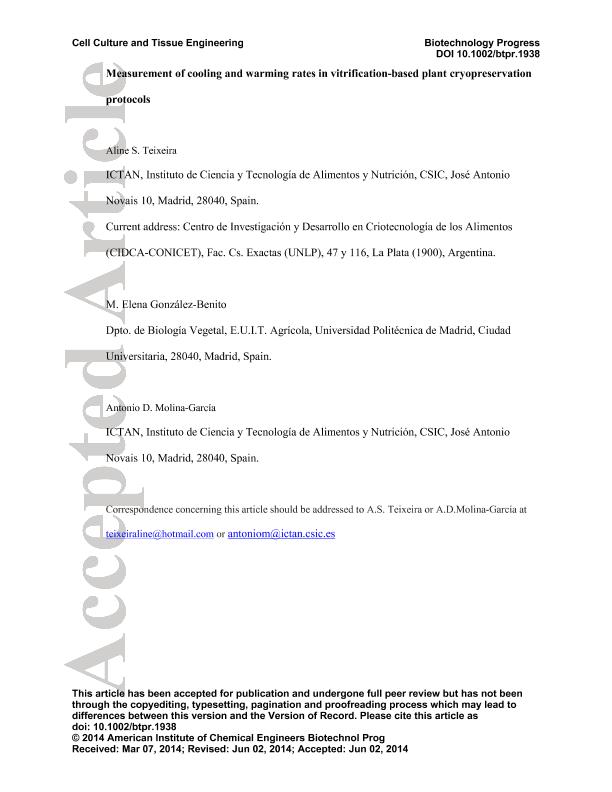Artículo
Measurement of cooling and warming rates in vitrification-based plant cryopreservation protocols
Fecha de publicación:
08/2014
Editorial:
American Chemical Society
Revista:
Biotechnology Progress
ISSN:
8756-7938
e-ISSN:
1520-6033
Idioma:
Inglés
Tipo de recurso:
Artículo publicado
Clasificación temática:
Resumen
Cryopreservation protocols include the use of additives and pre-treatments aimed to reduce the probability of ice nucleation at all temperatures, mainly through micro-viscosity increase. Still, there is a risk of ice formation in the temperature region comprised between the equilibrium freezing (Tf) and the glass transition (TG) temperatures. Consequently, fast cooling and warming, especially in this region, is a must to avoid ice-derived damage. Vitrification and droplet-vitrification techniques, frequently used cryopreservation protocols based in fast cooling, were studied, alongside with the corresponding warming procedures. A very fast data acquisition system, able to read very low temperatures, down to that of liquid nitrogen, was employed. Cooling rates, measured between -20 and -120 ºC, ranged from ca. 5 ºC s-1 to 400 ºC s-1, while warming rates spanned from ca. 2 ºC s-1 to 280 ºC s-1, for the different protocols and conditions studied. A wider measuring window (0 ºC to -150 ºC) produced lower rates for all cases. The cooling and warming rates were also related to the survival observed after the different procedures. Those protocols with the faster rates yielded the highest survival percentages.
Palabras clave:
Cooling
,
Warming
,
Rates
,
Vitrification
,
Droplet-Vitrification
,
Plant
Archivos asociados
Licencia
Identificadores
Colecciones
Articulos(CIDCA)
Articulos de CENTRO DE INV EN CRIOTECNOLOGIA DE ALIMENTOS (I)
Articulos de CENTRO DE INV EN CRIOTECNOLOGIA DE ALIMENTOS (I)
Citación
Schneider Teixeira, Aline; Gonzalez Benito, M. Elena; Molina García, Antonio D.; Measurement of cooling and warming rates in vitrification-based plant cryopreservation protocols; American Chemical Society; Biotechnology Progress; 30; 5; 8-2014; 1177–1184
Compartir
Altmétricas




